Nestled in the historic city of Kamakura, Zenkyoin temple offers a unique opportunity to take in the ancient practice of Zazen, or seated meditation. Led by a French-speaking Japanese master, the 2-hour session provides guidance on the art of Zen meditation, allowing participants to deepen their understanding of this rich spiritual tradition. From mastering the proper body posture to exploring the significance of the sutras, the experience promises to be both enlightening and transformative. But what awaits those who embark on this journey into the heart of Zen?
Key Points
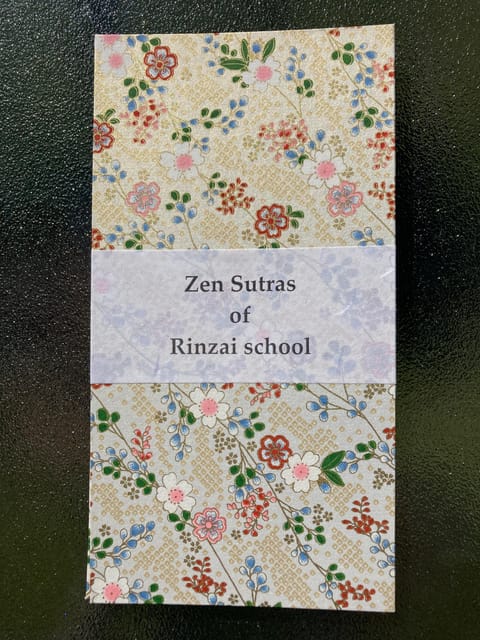
• A 2-hour Zazen session led by a French-speaking Japanese Zen master at the historic Zenkyoin temple in Kamakura, Japan.
• Participants learn about Zen philosophy, proper Zazen posture, and breathing techniques, as well as receive a book with sutra pronunciation and translation.
• The Zenkyoin temple has a rich history dating back to 1285, with the Zen master providing insights into the temple’s restoration and the Sōtō school tradition.
• Attendees engage in a guided Zazen practice and have the opportunity to ask questions about Zen principles, such as mindfulness and non-duality.
• The activity is suitable for those interested in seeing the Zen Buddhist tradition, with restrictions in place to maintain a serene environment.
Overview of the Activity
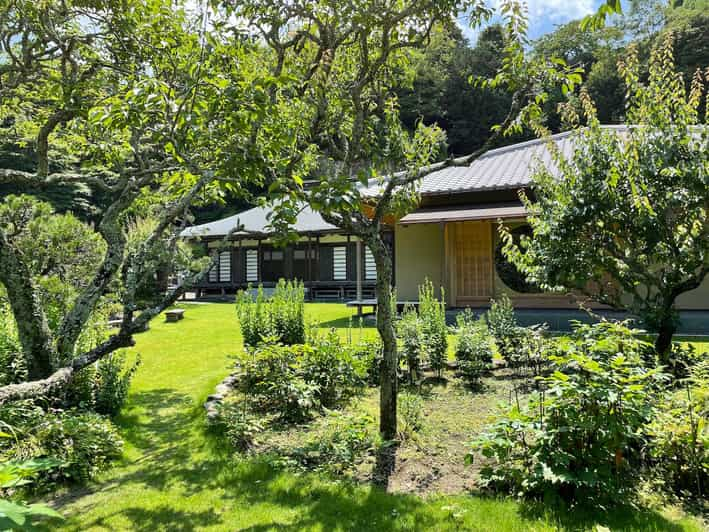
The activity at the Zenkyoin temple in Kamakura provides visitors with the opportunity to participate in a Zazen session led by a French-speaking Japanese master, offering an immersive experience in the philosophy and practice of Zen meditation.
During the 2-hour session, you will learn about Zen philosophy and the master’s personal experiences, as well as have the chance to practice Zazen, which includes proper body posture, breathing techniques, and reading sutras aloud.
The activity highlights include engaging in dialogue with the master and receiving a book with sutra pronunciation and English translation, though attendees should note that there are some restrictions, such as not being suitable for those with certain physical conditions.
You can also read our reviews of more tours and experiences in Kamakura.
Zen Philosophy and Zazen
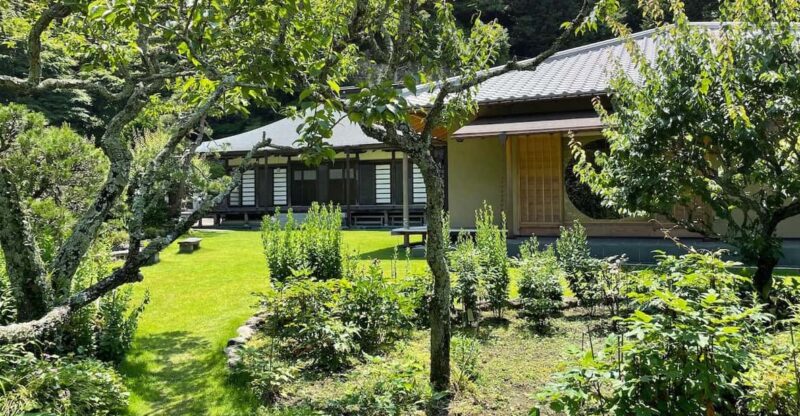
What lies at the heart of Zen philosophy is the practice of Zazen, a form of seated meditation that aims to cultivate mindfulness and profound self-understanding. Through the precise bodily posture, controlled breathing, and recitation of sutras, Zazen practitioners strive to still the mind, enabling them to directly experience the nature of reality and their own true selves.
The key elements of Zazen practice include:
- Correct body posture, with the spine upright, shoulders relaxed, and eyes downcast.
- Controlled, natural breathing, focusing the mind on the flow of the breath.
- Chanting or reciting Buddhist sutras, which can help quiet the internal dialogue.
Instructor and Zenkyoin Temple
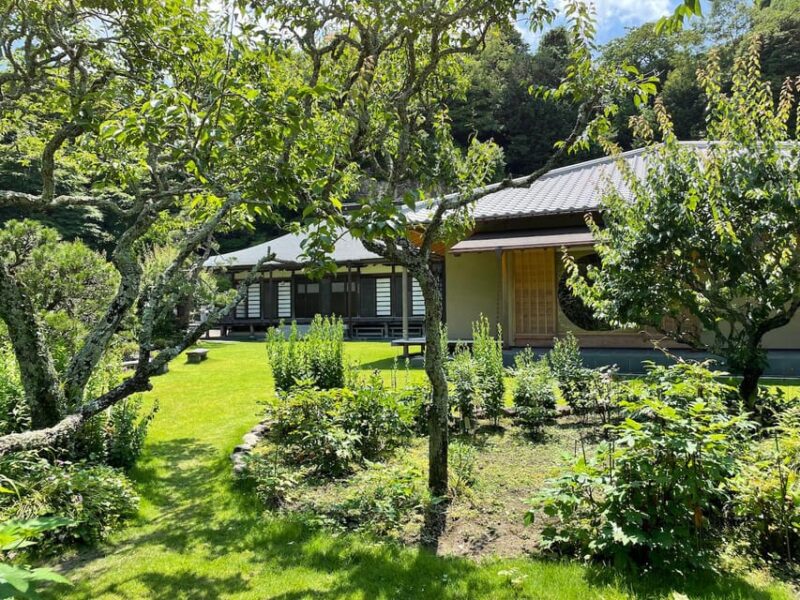
French-speaking Japanese Zen master guides visitors through Zazen practice at the historic Zenkyoin temple in Kamakura. The master shares insights into the temple’s storied past and his own path to Zen enlightenment, drawing upon decades of experience.
| Temple History | Zen Lineage | Master’s Teachings |
|---|---|---|
| Founded in 1285 | Sōtō school tradition | Importance of seated meditation |
| Damaged by fires, wars | Trained under renowned masters | Cultivating mindfulness and presence |
| Meticulously restored | Decades of Zazen practice | Transcending the ego-self |
The master’s warm and patient instruction helps participants connect with the timeless essence of Zen, as they enjoy the tranquil atmosphere of this revered temple.
Zazen Practice: Body Posture
Proper body posture lies at the heart of the Zazen meditation practice. Practitioners sit upright with their legs crossed, shoulders relaxed, and gaze cast downward to cultivate focus and inner stillness.
The key elements of Zazen posture include:
-
Crossed legs, with the left foot placed on the right thigh and the right foot on the left thigh.
-
Hands resting on the lap, with the left hand placed palm-up in the right hand, and the thumbs lightly touching.
-
Spine aligned vertically, creating a stable base for the head to rest gently atop the neck. This posture promotes alertness and prevents slouching.
Zazen Practice: Breathing and Sutra
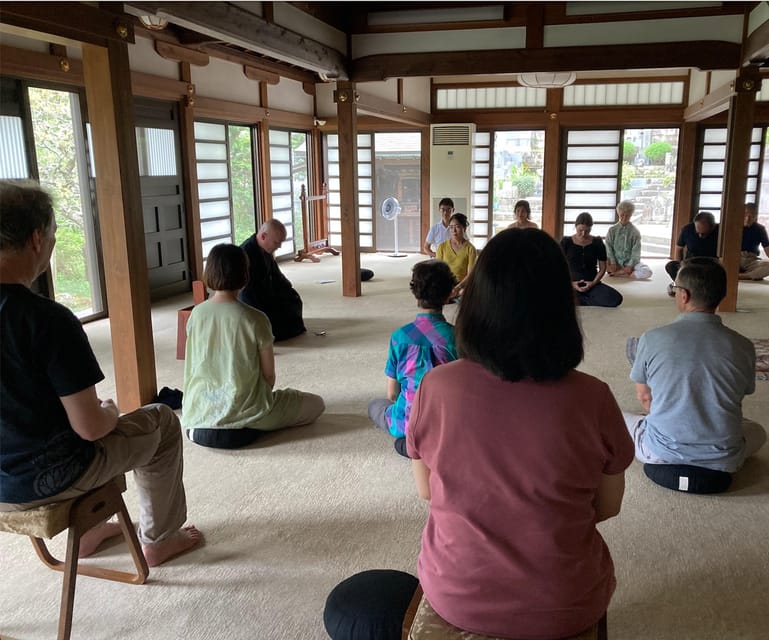
Breathing is another essential element of Zazen practice. Practitioners focus on their abdominal breathing, inhaling and exhaling slowly and deeply, to cultivate mindfulness and inner calm.
Plus, the recitation of sutras, or sacred Buddhist texts, is often incorporated into Zazen sessions, with participants reading the texts aloud in unison. This practice helps deepen the meditation experience and connect practitioners with the rich spiritual tradition of Zen Buddhism.
The French-speaking instructor at the Zenkyoin temple will guide participants through the proper breathing techniques and sutra recitation, ensuring everyone can fully engage with this holistic Zazen practice.
- Kamakura: Great Buddha, Hase Temple, & Komachi Street Tour
- Full Day Kamakura Private Tour With English Speaking Driver
- Kamakura: Full Day Private Tour With English Guide
- From Tokyo: Kamakura Private Customize Tour by Luxury Van
- Kamakura: Private History and Heritage Tour by Rickshaw
- Kamakura Through Time (Hiking, Writing Sutras…)
Question and Answer Session
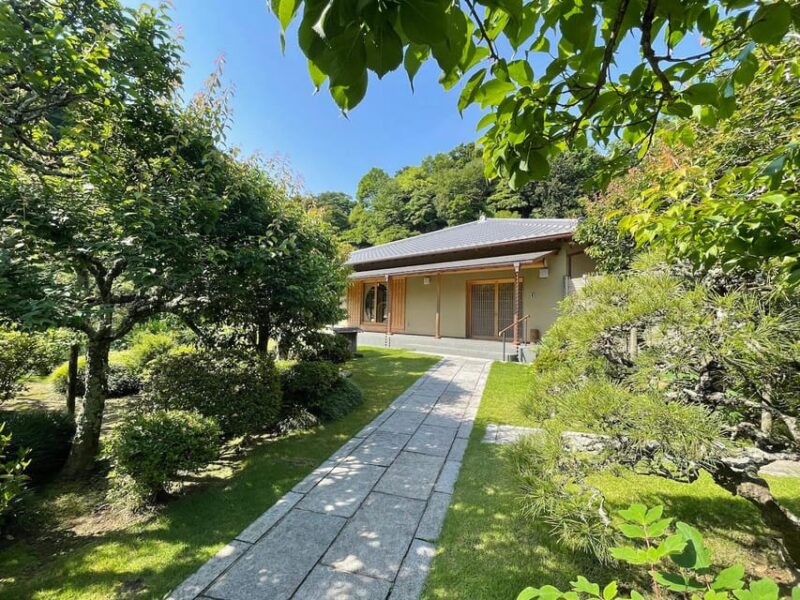
During the session, participants can freely ask the master questions about Zen philosophy, the Zenkyoin temple, and their personal Zazen experience.
The instructor encourages an open dialogue, providing insights and guidance to deepen everyone’s understanding of this contemplative practice.
The Q&A segment covers a range of topics:
- The history and significance of the Zenkyoin temple in the Kamakura Zen tradition.
- Key principles and concepts of Zen Buddhism, such as mindfulness, non-duality, and the nature of the self.
- Practical tips for deepening one’s Zazen practice, including techniques for posture, breathing, and mental focus.
The master shares personal anecdotes and real-world examples to illustrate the relevance of Zen teachings in daily life, fostering a rich exchange of ideas and fostering a deeper appreciation for this ancient practice.
Included in the Activity
What does the activity include, besides the Zazen practice session? The activity includes a talk by the French-speaking Zen master on the philosophy of Zen, their personal experience, and the history and significance of the Zenkyoin temple.
Participants also receive a book with sutra pronunciation and English translation, available at an additional cost. This provides deeper insight into the Zen teachings and allows participants to continue their practice and understanding after the session.
The master’s talk covers the core principles and history of Zen, sharing their own journey and wisdom. The supplementary book is a valuable resource for further exploration of the chanted sutras and their meaning.
Restrictions and Considerations
Certain individuals may not be well-suited for this activity, as it carries several restrictions and considerations. Pregnant women, people with back problems, or those facing mobility impairments are advised against participating.
Attendees must refrain from bringing:
- Food and drinks
- Short skirts, jewelry, and chewing gum
- Video recording devices, tight clothing, cellphones, and photography inside the temple
These guidelines are in place to ensure a focused and respectful Zazen experience for all participants. By adhering to these restrictions, the temple can maintain a serene environment conducive to the practice of Zen meditation.
Frequently Asked Questions
Can I Bring My Own Zafu (Meditation Cushion)?
Yes, you can bring your own zafu (meditation cushion) to the Zazen session. The venue provides zafu, but you’re welcome to use your personal cushion if you prefer.
Is There a Dress Code for the Session?
There’s a dress code for the Zazen session – no short skirts, tight clothing, or jewelry allowed. Comfortable, loose-fitting attire is recommended to allow for easy movement and focus during the meditation practice.
Is It Possible to Observe the Session Without Participating?
Yes, it’s possible to observe the Zazen session without participating. Observers will be able to watch the practice but won’t be able to fully engage in the meditation. They’ll need to follow the session’s rules and restrictions.
Can I Take Photos During the Practice Session?
Unfortunately, no photography is allowed during the Zazen practice session. The activity guidelines specifically state that video recording and photography inside the temple are prohibited items. Participants must respect this rule to maintain the serene environment for the meditation practice.
Will the Instructor Provide Translation During the Lecture?
The instructor will provide French-English translation during the lecture on Zen philosophy and practice. Participants can freely ask questions and receive explanations in both languages throughout the session.
Recap
Kamakura’s Zenkyoin temple offers an immersive Zen meditation experience led by a French-speaking Japanese master.
Participants learn the art of Zazen, engage in dialogue, and receive a book to continue their personal practice.
This unique opportunity allows visitors to deepen their understanding of Zen Buddhism’s rich spiritual tradition.
You can check if your dates are available here:More Tour Reviews in Kamakura
- Kamakura: Largest Wooden Buddha, Temples, Cultural Experience
- Kamakura: Visit Great Buddha and Shopping Experience
- Kamakura, Craft Your Music Box & Discover Japans Biggest Buddha
- Kamakura Calligraphy Experience
- Tour in Kamakura Great Buddha Shogun Shrine With Photographer
- ZASHIKIMAI Performance by National Theatre in Kenchoji, Kamakura
Not for you? Here's more things to do in Kamakura we have recnetly reviewed
- 6 Best Full-Day Tours In Kamakura
- 2 Best Food Tours In Kamakura
- Tokyo: Kamakura Private Tour English Speaking Driver
- Guided Kamakura Private Tour GREEN NUMBER PLATES
- Kamakura: Best Guided Day Tour With Tea Ceremony
- Kamakura Private Custom Tour With Local Guide
- Kamakura Private Half-Day Vegetarian & Muslim-Friendly Tour
- 3h Private Tour With a Local Photographer
- Kamakura Small Group Onigiri Making and Sake Tasting in Sake Bar
- 【Explore Kamakura – Private 3 Hour】 Guided Walking Tour Special
- Kamakura Magokoro Ramen Cooking Class
- Hayama Imperial Villa and Tateishi Ukiyo-e Private Half Day Tour
